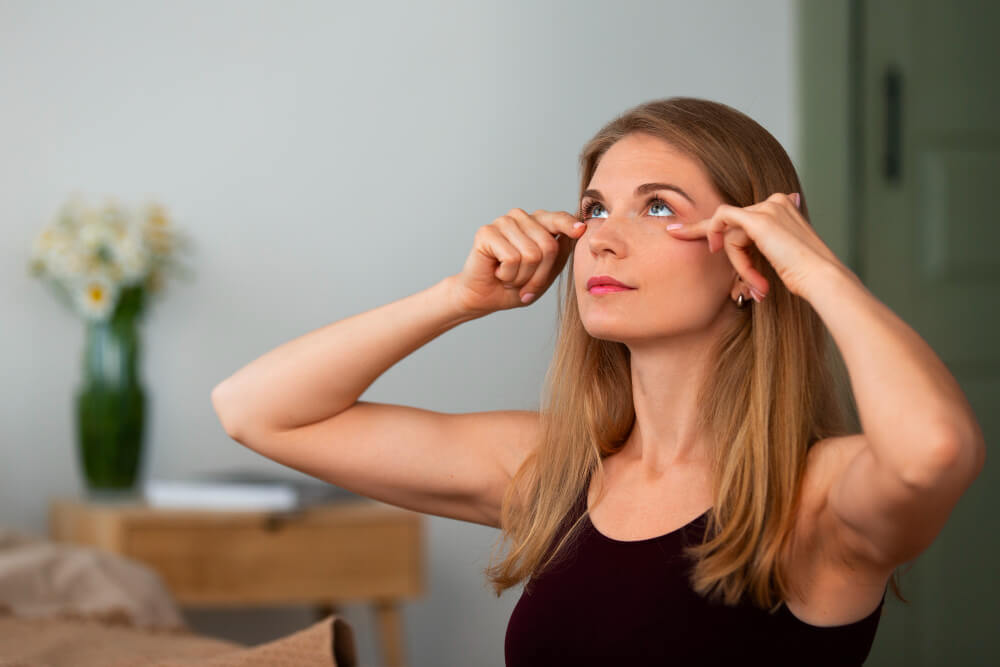
Blinking is something we all do without thinking. It happens so quickly that most of us never stop wondering why or how often we blink. Blinking does much more than just keep your eyes moist. It is a natural way to protect your eyes and keep them healthy. Each blink gives your eyes a quick, refreshing reset.
Have you ever thought about how many times you blink a day? You will be surprised to know the answer! In this blog, we will explore why blinking is so important, and its health benefits. You will also learn fun facts and tips to make sure your blinking habits keep your eyes in great shape. Let’s get started!
Why Blinking is Important for Your Eyes?
Blinking is one of the simplest ways your body takes care of your eyes. Every time you blink, a thin layer of tears spreads across your eyes. These tears keep your eyes moist, which helps them stay healthy and clear. Without enough moisture, your eyes can feel dry, itchy, or irritated.
It also acts like your eyes’ natural cleaning system, shielding them from dust, dirt, and other irritants floating in the air.
Blinking even helps prevent eye strain. It gives your eyes a tiny break by allowing them to rest and recover, especially when you focus for a long time, like when reading or using a computer.
How Many Times Do You Blink a Day?
You blink more often than you might realize. On average, most people blink around 15 to 20 times every minute. This adds up to nearly 14,000 to 20,000 blinks every single day. Blinking is constant, but we hardly notice it because it happens so fast.
Your blinking rate can change depending on what you are doing. For instance, when you have screen time, your blinking rate automatically slows down. On the other hand, when your eyes feel tired or irritated, your eyes will start blinking more frequently.
If you notice changes in how often you blink, it might be time to give your eyes some extra care.
Health Benefits of Blinking

Blinking might seem like a small action, but it has big benefits for your eyes. Here are the key ways blinking keeps your eyes healthy:
1. Keeps Your Eyes Moist and Comfortable
Each blink gently spreads a layer of tears over your eyes. This tear film keeps your eyes moist and prevents them from feeling dry or irritated. Moisture is essential for clear vision and overall eye comfort.
2. Removes Dust and Irritants
Blinking works like a natural cleaning system. It sweeps away dirt, dust, and tiny particles that might harm your eyes, helping to lower the risk of irritation or infection.
3. Prevents Eye Strain
When you blink, your eyes get a short break. This is especially helpful when focusing on something for a long time, like a book or a computer screen. Regular blinking reduces eye fatigue and keeps your eyes feeling fresh.
4. Improves Visual Clarity
By refreshing the surface of your eyes, blinking helps maintain a smooth tear film. This tear film ensures your vision stays clear and sharp throughout the day.
How to Blink Better in the Digital World?
With so much of our time spent on screens, blinking the right way has become more important than ever. Studies have found that during screen time, your blinking rate can drop to as low as 5 to 7 times per minute leading to dry eyes and discomfort.
To avoid this, try these simple tips:
- Follow the 20-20-20 Rule: Every 20 minutes, take a 20-second break and shift your focus to something 20 feet away. This reduces strain and reminds you to blink.
- Blink More Often, Consciously: Pay attention to how often you blink, especially during screen time. Try to blink fully and naturally to keep your eyes hydrated.
- Stay Hydrated: Staying hydrated by drinking plenty of water helps your body produce the tears needed to keep your eyes moist and comfortable.
- Use Artificial Tears if Needed: If your eyes feel dry, over-the-counter lubricating drops can provide relief and supplement natural moisture.
Fun Facts About Blinking
Blinking is more fascinating than you might think. Here are some eye-opening facts about this simple yet essential action:
- A blink lasts only 0.1 to 0.4 seconds, making it one of the quickest human reflexes.
- On average, you blink about 15–20 times per minute, but this rate drops significantly when you focus on something like reading or using a screen.
- Babies blink much less than adults—just 1–2 times per minute—compared to adults 15–20 times.
- Women usually blink more often than men because of hormonal differences.
- Cats and other animals have an extra eyelid, known as a ‘nictitating membrane,’ which helps them blink and shield their eyes.
Conclusion
Blinking is a small action with a big impact on your eye health. It moistens your eyes, clears irritants, and helps prevent strain. On average, how many times do you blink a day might surprise you—thousands of times! However, this number keeps on changing depending on your environment and activities.
If you are experiencing dry eyes, strain, or any discomfort, we are here to help. Book an appointment with our eye care center today to keep your eyes healthy and performing at their best.
FAQs
Yes, blinking too much or too little can lead to eye discomfort, dryness, or indicate underlying conditions. Consult an eye care professional if this occurs.
Screen focus reduces blinking because your brain prioritizes concentration. This can lead to dry eyes and strain, so remember to blink consciously.
Yes, blinking maintains a healthy tear film, clears irritants, and keeps your vision sharp and comfortable throughout the day.


